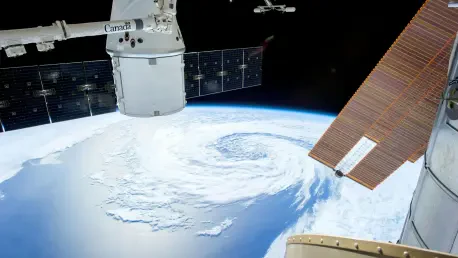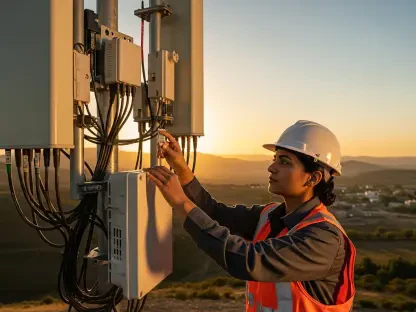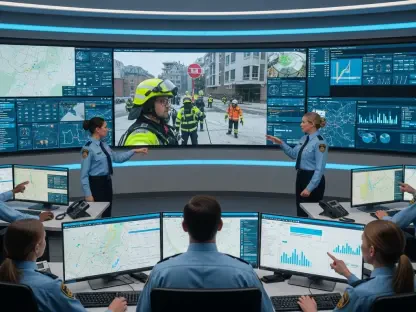In a groundbreaking odyssey to unlock the enigmas of space weather, NASA is poised to launch the Tandem Reconnection and Cusp Electrodynamics Reconnaissance Satellites, or TRACERS. These twin satellites are set to explore the dynamic interactions between solar wind and Earth’s magnetosphere. This mission, aboard a Falcon 9 rocket, is scheduled for liftoff at Vandenberg Space Force Base. Unlike typical astronomical pursuits, TRACERS is not just about collecting data; it’s about answering critical questions that have long baffled scientists. How exactly does solar wind impact space weather? What is the secret behind auroras’ shimmering beauty? Solving these puzzles matters not only for the sake of knowledge but also for protecting technological systems, orbiting satellites, and human life itself from the capricities of space weather.
Exploring the Magnetosphere
Understanding the Dynamics of Solar Wind and Earth’s Magnetosphere
NASA’s TRACERS satellites aim to scrutinize the magnetosphere as it dances with the charged particles of solar wind. The sun continuously emits a stream of charged particles known as solar wind. As these particles interact with Earth’s magnetic field, they can create geomagnetic storms that lead to significant space weather phenomena, including the ethereal lights of the auroras. These tumultuous interactions can disrupt satellite communications, affect GPS systems, and pose dangers to astronauts. The mission’s pivotal focus is on reconnection, a process where magnetic field lines from different magnetic domains merge together, releasing vast amounts of energy. Researchers have long sought to watch this cosmic ballet from a closer vantage point, and TRACERS promises just that. By flying in tandem, the satellites will allow scientists to observe these reconnection processes in unprecedented detail, shedding light on the energy transfer from the sun to our planet’s protective magnetosphere.
Investigating the Energetic Auroras
Auroras, famed for their colorful, shimmering displays, are the most visible manifestations of space weather. These natural light shows occur when energetic particles from the sun collide with Earth’s atmosphere, exciting gases and prompting them to emit vivid colors. Yet, there’s more to auroras than meets the eye. The TRACERS mission will delve into the cusp region of Earth’s magnetic field, a site known for funneling solar particles into the atmosphere. Through precise measurements and observations, TRACERS expects to unravel the magnetic reconnection processes that occur here, sparking the auroral displays. This knowledge is not purely academic. Understanding auroras better provides insights into space weather conditions, ultimately aiding in predicting and mitigating their impacts on technology and human activities in space. This endeavor enhances the safety and reliability of the tools that incessantly orbit our planet and upon which modern society heavily relies.
TRACERS Mission Launch and Execution
The Role of Vandenberg Space Force Base
Vandenberg Space Force Base has taken center stage as a crucial launch point for NASA’s latest mission, showcasing its integral role in the modern space age. Situated along the California coast, Vandenberg provides optimal launch conditions for missions like TRACERS that require specific orbital inclinations. The launch window for TRACERS is meticulously planned within a 57-minute timeframe beginning at 11:13 a.m. This precision ensures the satellites are placed into optimal orbits for their scientific objectives. Additionally, following the delivery of the payload, the first-stage booster will execute a landing back at Vandenberg, exhibiting precise engineering and marking its 16th successful mission. The involvement of such bases emphasizes the collaborative and logistical undertakings necessary for space exploration, reinforcing the commitment to advancing scientific understanding through well-executed and strategic missions.
Opportunities for Public Engagement and Observation
The excitement surrounding the TRACERS launch extends beyond scientific circles, offering public engagement opportunities to witness this historical moment. Enthusiasts from around the Lompoc Valley and afar can catch a glimpse of the takeoff. In addition, NASA has broadened the possibilities for public participation by providing a live webcast. This inclusive approach transforms what could be a purely scientific endeavor into a shared experience, fostering greater appreciation and awareness of space exploration’s significance. As the satellites embark on their mission, public observers can gain significant insight into NASA’s continuous efforts to unpack the mysteries of our solar system and contribute invaluable knowledge to humanity’s collective understanding of space weather.
The Impact of Solving Space Weather Mysteries
Enhancing Technological Resilience and Safety
By addressing space weather challenges, the TRACERS mission holds the potential to greatly advance technological resilience. As solar emissions have shown the propensity to affect modern technology, from satellites and communications systems to broader power infrastructure, understanding how solar wind couples with Earth’s magnetosphere becomes crucial. Through this mission, NASA endeavors to provide insights that could guide the development of strategies to safeguard these critical infrastructures from space weather disruptions. The cascading benefits extend even further; by refining predictive models, we stand to ameliorate the risks posed to astronauts, space missions, and aviation. This scientific pursuit transcends mere curiosity, addressing practical concerns that influence everyday life and operations, securing safer and more reliable technologies that businesses and civic services fundamentally rely on.
Broadening the Understanding of Solar-Terrestrial Relationships
The buzz around the TRACERS launch extends beyond the realm of science, opening public doors to witness this landmark event. Space aficionados near Lompoc Valley and beyond have the chance to watch the takeoff. NASA enhances public involvement by offering a live webcast, transforming a purely scientific mission into a communal experience. This approach not only invites public attention but also helps cultivate an understanding and respect for the profound importance of space exploration. As the satellites commence their journey, casual observers can gain significant insight into NASA’s ongoing missions aimed at unraveling the mysteries of our solar system. These missions contribute incredibly valuable knowledge to humanity’s comprehension of space weather and its effects. NASA’s efforts serve to educate the public about the intricacies of cosmic phenomena, providing a window into the fascinating world of scientific discovery and inspiring future generations to explore unknown cosmic horizons.









